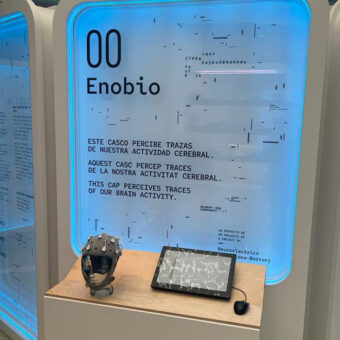Some years ago I was deeply intrigued by the notion of “locking” into natural brain rhythms using tACS or more exotic tCS flavors. The basic notion stems from the idea of resonance the phenomenon in which a forced dynamical system is able to accumulate more and more energy from dynamically-matched external forcing, as in a swing (all parents … and kids know how to do this). Similarly, one could conjecture, if we force brain dynamics with a magical frequency or otherwise properly designed waveform we may entrain and amplify certain rhythms
Although nobody was really asking for it at the time, these thoughts provided an important element in the decision to create a device capable of stimulating and recording EEG simultaneously. Could we use it to study such resonance effects? More generally, could we envision open or closed-loop applications that would allow for “smart” EEG-driven stimulation?
A related phenomenon is stochastic resonance, which may play a role in the effect of tRNS. Basically, adding noise to a non-linear system may make it more likely to resonate. This is a phenomenon in the realm of non-linear dynamics (and the brain is definitely non-linear!).
In order to explore resonance in the brain, a technique like EEG is very appropriate, as it provides loads of “live” information on brain dynamics. Other possibilities exist, of course. E.g., one could use motor dynamics instead of EEG, as in the recent and fascinating study on phase-locked-loop tACS tremor suppression by Brittain et al.
By the way, we should distinguish here two types of EEG-driven stimulation: open-loop and closed loop (or “feedback”). By open loop we mean that EEG or other info is used to tune stimulation parameters – once. For example, EEG is used first to estimate the peak Alpha frequency of a subject, and then this parameter is passed to the tACS stimulator. By closed loop we mean that EEG info is used to continuously update stimulation parameters (as in the figure below). Following with the previous example, EEG data would be continuously monitored to adjust the frequency and phase of frequency matched tACS (with the goal of excitation or, via a 180 phase shift, for inhibition).
I discussed the potential of combining EEG and tCS in an earlier post (tCS and EEG: an electrical golden braid), and with some colleagues we took a first stab at relating EEG and tCS in a computational model, inspired by the early experimental work by Zaehle and colleagues, who showed that EEG-personalized tACS can enhance alpha activity in humans. This is perhaps the first example I know of EEG-informed tACS stimulation (open loop). It has been recently extended to study the effects of tACS on alpha during stimulation by Helfrich et al. who claim to have shown that concurrent tACS enhances alpha activity, and, in addition, that target detection performance can be modulated by phase controlled tACS stimulation.
The open or closed loop EEG-based optimization of multichannel tCS is also discussed in our recent paper on Optimization of multifocal tCS. More work is definitely needed in the modeling arena – but best driven or in parallel with experimental work.

Some applications of closed-loop stimulation are fairly intuitive and are currently being explored in several research centers. For instance, in the case of epilepsy such a system could be used to detect the onset and characteristics of an epileptic event and respond accordingly. This could be done via tDCS (applying cathodal stimulation on the site of epileptogenic site) or via 180-degree phase offset stimulation at the appropriate frequency.
Other applications are less obvious. Can we alter inhibitory rhythms such as the Alpha rhythm to enhance concentration?
In a recent communication Boyle and Frohlich show that EEG based tACS (at 40 Hz) can be used to control alpha band power. The implemented strategy by this team is based on the (unpublished yet) observation that cortical oscillations in the alpha band (8-12 Hz) are antagonistically modulated by tACS in the gamma band (40 Hz). This effect would be based on the natural antagonism between resting, inhibitory alpha activity and sensory processing gamma rhythms. This result is an important first step in closed loop, non-invasive cortical dynamics control technology, with eventual applications in attentional and sensory processing deficiency pathologies such as schizophrenia, autism and ADHD (of course, there is much work to do to develop a clinically relevant protocol). Incidentally, Frohlich’s lab has also examined tACS resonance and the potential of endogenous rhythms to control neural dynamics in brain slices. This is very important work, in my opinion.
Measuring EEG concurrent with ongoing simulation is hard to do. Assuming amplifiers are not altogether saturated (and devices such as Starstim provide 24 bit digitization to avoid that), the stimulation artifact is orders of magnitude greater than the endogenous EEG signals. However, advanced signal processing techniques coupled with advanced technology can help. You can learn more about doing stimulation and EEG recording with Starstim from our knowledge section. E.g., in the recent White papers on tDCS+EEG and tACS+EEG you can see some examples on recording EEG concurrent with stimulation as in the figures below, showing the PSD and spectrogram for the same subject with 15 Hz stimulation on and off.
Before cleaning up the stimulation artifact, this is what it looks like:
Not very promising! Yet, perhaps surprisingly, useful data can be retrieved – the artifacts can be removed. This is especially simple in Starstim, since the same device is used to record EEG and stimulate. After cleaning, can you tell which PSD corresponds to stimulation on and which to stimulation off (in the next figures)?






